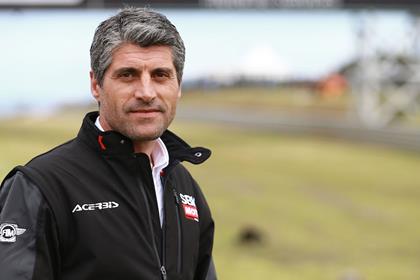WSB: Lavilla explains controversial grid rules
When World Superbike bosses announced they would introduce a radical new system to compose the grid for Sunday’s second races, it’s fair to say there was a mixed response.
Reverse grids are nothing new in motorsport, but the system opted for by those in charge of WSB is quite different. At first glance, the new rules appear confusing and judging by the response on social media, it took many fans a while to get their head around them.
Instead of forming the grids for both races from Saturday’s Superpole qualification, the second race will now in part depend on where a rider finishes in the first. The riders finishing first, second and third, will move back to the third row and start ninth, eighth and seventh respectively.
The riders who finish fourth, fifth and sixth, will move to the front row and assume the positions of pole, second and third, while the riders who finish seventh, eighth and ninth, will form the second row and start fourth, fifth and sixth. The rest of the grid will be comprised by Superpole times with the times for the top nine finishers in race one removed.
The news met mixed reaction from fans, but WSB Sporting Director Gregorio Lavilla has now spoken out in an effort to explain the new system and why they saw fit to introduce it for 2017.
TOP STORIES
- Roads: Guy Martin in shock TT return with Honda Racing
- Video: Guy Martin on why he signed for Honda
- 7 brilliant reasons to ride this week
- 5 top ways to get your tyres road-ready
- Prizes: Get your hands on lots of lovely goodies
“There were two main reasons we decided to change the grid,” the former BSB champion explains. “One is trying to make the racing, if possible, a bit more exciting. The second reason, which for me is the most important, is to try and give the teams and riders more value. They do not always have the possibility to start the race from the front row, but with this format we are giving a bit more value to these riders.
“As well as this we are able to give riders another chance if they had a very bad Saturday. Personally I have to say that we thought any changes we made to next year’s grid would be really exciting and these changes are not too dramatic. At the end of the day we considered all the pros and cons and we hope it can bring something special.”
One of the biggest questions surrounding the new system is what would happen to a rider who qualified in the top nine, but crashed out of a top nine position in the opening race.
“To determine grid position we look at race one results, and the first nine riders go directly to the first three rows and then we have the Superpole qualification,” he explained. “You must take away from this classification the first nine of race one because they are already there.
“Then you’re left with the Superpole list without the top nine of race one –it then takes the order of the back of the grid, it’s very simple. So the rider who’s on the top of the list and crashed out goes down to tenth, but if a rider is 11th or 12th in Superpole and they crashed, they can keep the same position – these are the variables that we will have.”
Looking for the perfect two-wheeled companion? Visit MCN Bikes For Sale website or use MCN’sBikes For Sale App.


